* (restored)
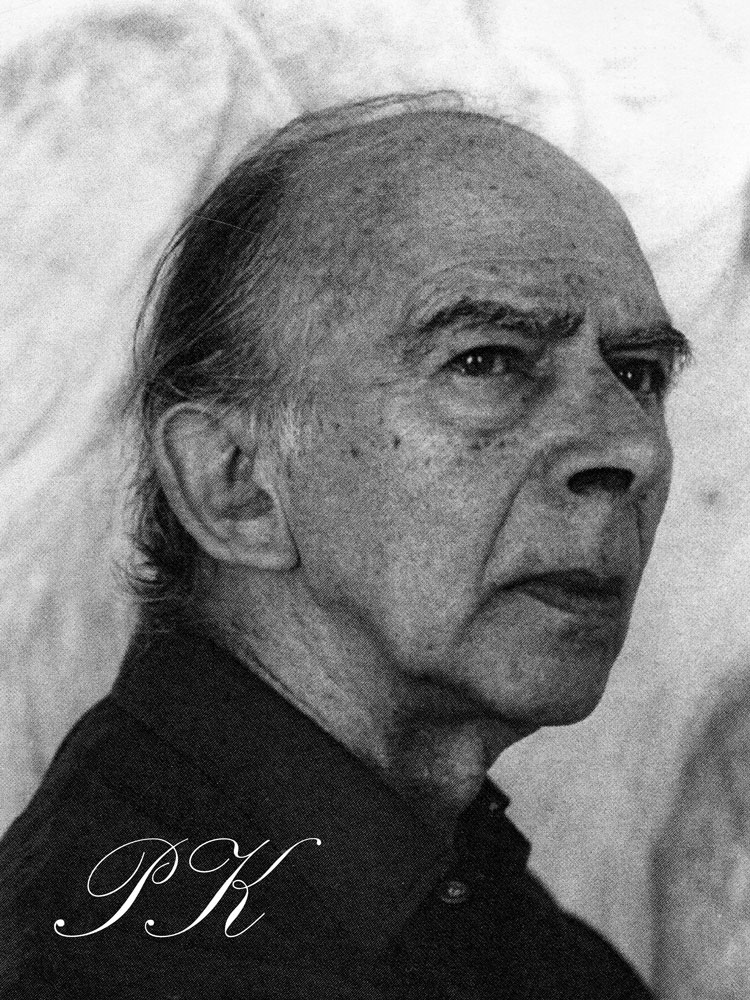
‘Pierre Klossowski (1905-2001) played a significant role in French art, literature, and philosophy from the 1930s through the 1980s. His writings rehabilitating the Marquis de Sade as a figure of legitimate literary significance and exploring the philosophical dimensions of pornography, as well as his own substantial corpus of erotic novels and drawings, drew attention from influential critics such as Maurice Blanchot, Gilles Deleuze, Jean-Francois Lyotard, and Jean Baudrillard. Born in Paris to Russian-Polish parents, and older brother to Balthazar (who would become famous as a painter under the name Balthus) he was mentored during his childhood by Rainer Maria Rilke (his mother’s long-time companion after her separation from Klossowski’s father), then in the 1920s by Andre Gide, for whom he worked as private secretary and copyeditor of The Counterfeiters, a novel expressing Gide’s philosophy of self-discovery through hedonism and sexual experimentation. Klossowski subsequently embarked on what would be a lifelong quest to blend these two formative influences by exploring the redemptive theological potential of sexually transgressive art.



‘By the early 1930s, the Marquis de Sade had become Klossowski’s hero, an affinity that he shared with Surrealists including Robert Desnos, Paul Eluard, and Georges Bataille. Unlike his peers, however, Klossowski was interested in the philosophical implications of Sadean pornography rather than in violence, excess, and immorality as tools of socio-political contestation. At the height of the Popular Front, Klossowski’s trepidation regarding the use of art for political purposes and his fascination with the role of new technologies in artistic production led him to befriend Walter Benjamin, whose seminal essay ‘The Work of Art in the Age of Mechanical Reproduction’ he translated into French. Klossowski’s deepening interest in theology and distaste for politics led him to join the Dominican order of La Lesse in late 1939. He spent the war studying and working as a chaplain in a Vichy internment camp for political prisoners but was never ordained, leaving the monastery shortly before the Liberation. An original member of the Dieu vivant discussion group formed in 1944 to work out the moral questions posed by the Occupation, Klossowski argued that the expression of extreme evil, whether in the form of Nazism or Sade’s sociopathic embrace of perversity–a topic explored in his 1947 book, Sade mon prochain — is, in fact, morally redemptive because it prompts spiritual resistance through acts of kindness, thereby reawakening and strengthening humanity’s impulse toward good.

‘Le jeune Ogier …,’ 1972

‘Le balcon,’ 1974
 ‘Klossowski’s career as a creative artist began in 1954 with the publication of Roberte Tonight, the first in a series of self-illustrated, neo-Sadean novels whose heroine is, shockingly, an alter ego of the authorís wife Denise, a former deportee and survivor of Ravensbruck whom he married in 1947. The novels, later collected under the title The Laws of Hospitality, recount the adventures of Octave, an aging Catholic scholar who willingly gives his wife to all willing guests in their home so that he may experience voyeuristic pleasure and provide his nephew Antoine with a sexual education. As with Sade, it is at first glance difficult to discern any philosophical or theological message at work in such an apparently one-dimensional narrative, but Maurice Blanchot lauded Klossowski’s work as ‘a new gnosis [that] brings to literature what it has lacked since Lautreamont’ and ‘a sacrilege that attests to the sacred, for if transgression requires an interdict, the sacred requires sacrilege, so that the sacred, which is only witnessed through the impure speech of blasphemy, will not cease to be indissociably bound to a power always capable of transgression.’
‘Klossowski’s career as a creative artist began in 1954 with the publication of Roberte Tonight, the first in a series of self-illustrated, neo-Sadean novels whose heroine is, shockingly, an alter ego of the authorís wife Denise, a former deportee and survivor of Ravensbruck whom he married in 1947. The novels, later collected under the title The Laws of Hospitality, recount the adventures of Octave, an aging Catholic scholar who willingly gives his wife to all willing guests in their home so that he may experience voyeuristic pleasure and provide his nephew Antoine with a sexual education. As with Sade, it is at first glance difficult to discern any philosophical or theological message at work in such an apparently one-dimensional narrative, but Maurice Blanchot lauded Klossowski’s work as ‘a new gnosis [that] brings to literature what it has lacked since Lautreamont’ and ‘a sacrilege that attests to the sacred, for if transgression requires an interdict, the sacred requires sacrilege, so that the sacred, which is only witnessed through the impure speech of blasphemy, will not cease to be indissociably bound to a power always capable of transgression.’

Pierre Zucca, ‘La Monnale vivante,’ 1970

Pierre Zucca, ‘Le Monnale vivante,’ 1970
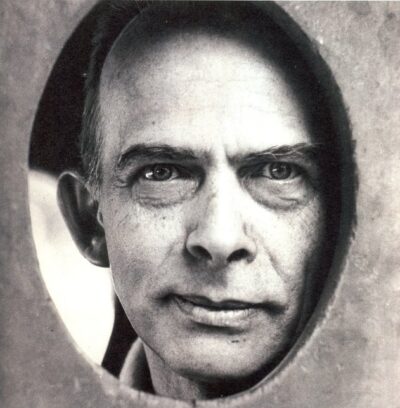 ‘During the 1970s Klossowski found new means of expression using the technologies of ‘mechanical reproduction’ that captivated the imagination of his old friend Walter Benjamin. He turned first to photography, working with Pierre Zucca on an illustrated version of La Monnaie vivante (which develops the idea that money might usefully be replaced by a ‘libidinal economy’ in which sex is the only valid currency), then to film adaptations of his novels, first by Zucca, then by Chilean director Raoul Ruiz. As Klossowski mentions in his essay ‘The Indiscernible,’ cinema allowed him to flout all the conventions of movie-star culture and commercial filmmaking, both mainstream and pornographic; in that sense he shares the preoccupations of Robert Bresson, in whose film Au Hazard Balthazar (1967) he appeared briefly.
‘During the 1970s Klossowski found new means of expression using the technologies of ‘mechanical reproduction’ that captivated the imagination of his old friend Walter Benjamin. He turned first to photography, working with Pierre Zucca on an illustrated version of La Monnaie vivante (which develops the idea that money might usefully be replaced by a ‘libidinal economy’ in which sex is the only valid currency), then to film adaptations of his novels, first by Zucca, then by Chilean director Raoul Ruiz. As Klossowski mentions in his essay ‘The Indiscernible,’ cinema allowed him to flout all the conventions of movie-star culture and commercial filmmaking, both mainstream and pornographic; in that sense he shares the preoccupations of Robert Bresson, in whose film Au Hazard Balthazar (1967) he appeared briefly.


‘Diane et Acteon,’ 1990
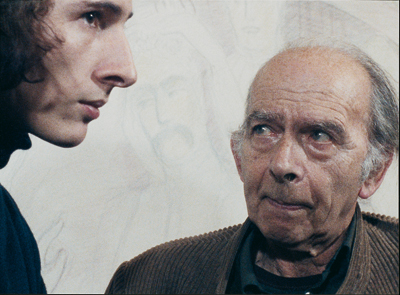 ‘Klossowski produced three sculptures in the 1990s. From his apartment in Paris, where he lived with his wife Denise, he continued to inspire generation after generation until his death in 2001. Even in death, Pierre Klossowski was inevitably linked with his younger brother, the painter Balthus. Almost all obituaries of the artist, writer, and translator, who died in Paris at age ninety-six, mentioned that his more famous sibling had died only six months earlier. Both vied in wry self-deprecation: Balthus summed up his own painting by saying, “I do surrealism in the style of Courbet,” while Klossowski claimed to be no artist, writer, thinker, or philosopher “but first, foremost, and always, a monomaniac.” Of Klossowski’s death, French Culture minister Catherine Tasca said, “A man of immense culture has left us. I’m sure that Klossowski’s writing, and his painting, too, will remain an inspiration in the years and decades to come.”‘
‘Klossowski produced three sculptures in the 1990s. From his apartment in Paris, where he lived with his wife Denise, he continued to inspire generation after generation until his death in 2001. Even in death, Pierre Klossowski was inevitably linked with his younger brother, the painter Balthus. Almost all obituaries of the artist, writer, and translator, who died in Paris at age ninety-six, mentioned that his more famous sibling had died only six months earlier. Both vied in wry self-deprecation: Balthus summed up his own painting by saying, “I do surrealism in the style of Courbet,” while Klossowski claimed to be no artist, writer, thinker, or philosopher “but first, foremost, and always, a monomaniac.” Of Klossowski’s death, French Culture minister Catherine Tasca said, “A man of immense culture has left us. I’m sure that Klossowski’s writing, and his painting, too, will remain an inspiration in the years and decades to come.”‘
Note: Most of the above text was taken from the writings of Brett Bowles in H-France and Benjamin Ivry in Artforum Magazine
* Pierre Klossowski @ Cabinet Gallery, London
* Wikipedia entry
* Video: ‘Roberte’ (1979), Director: Pierre Zucca, Writer: Pierre Klossowski
* ‘Roberte Ce Soir and The Revocation of the Edict of Nante’
—

“I am still and will always be fourteen years old… in my fourteen years I have more memories than if I had lived a thousand…” Pierre Klossowski, in an unpublished conversation with Hans-Ulrich Obrist of 1998.

‘Socrate interrogeant le jeune Charmide,’ 1984

‘Roberte interceptee par les routiers III,’ 1972

‘Tarquin en Lucretia,’ 1980
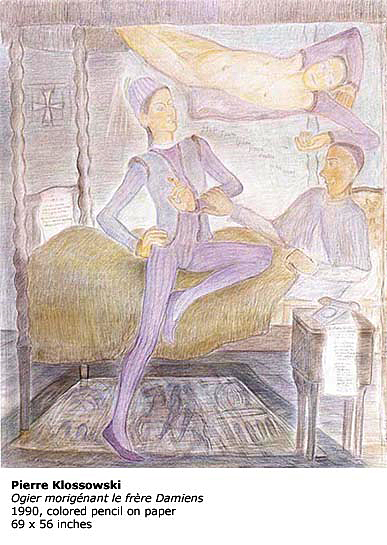

‘La Cuisine de Gilles,’ 1976
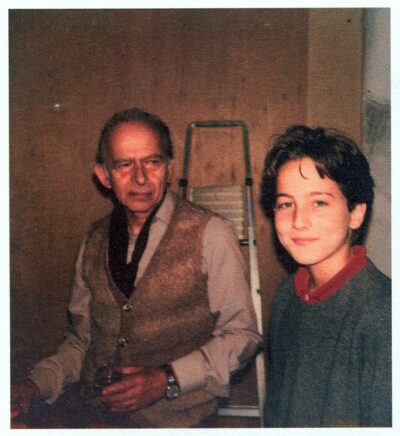 ‘Let it be said, Klossowski’s drawings are odd. Look at La cuisine de Gilles (1976) in which an effeminate boy is fondled and bitten fireside by the 15th century nobleman Gilles de Rais, infamous for his murderous sexual debauchery, necrophilia, and unshakable Catholic faith. Look at Roberte, naked and sleeping with a fully dressed, wand-waving lilliputian Gulliver on her knees in Roberte et Gulliver I, (1980). Look, in Tarquin et Lucrèce (1976), at the flattened space from which Tarquin is supposed to be emerging, the way Lucrecia’s leg slides off her improbable bed, or the way, despite the struggle, one of her ankles remains delicately covered. There is something both absurd and strangely disquieting about Klossowski’s large-scale erotic renderings, a fact compounded by their lack of perspective, technical sophistication, and finish. In his graphic oeuvre, one will not find a single landscape or still life, no pretty Arcadias and no studies of baskets of fruit. Klossowski made a specialty of overtly theatrical tableaux vivants. In them, figures appear off balance and out of proportion, frequently supplicating, reprimanding or seducing (and gesturing with their other hand against this at that same time), and often in some state of undress. They look as if they are suspended – in action and in another time.
‘Let it be said, Klossowski’s drawings are odd. Look at La cuisine de Gilles (1976) in which an effeminate boy is fondled and bitten fireside by the 15th century nobleman Gilles de Rais, infamous for his murderous sexual debauchery, necrophilia, and unshakable Catholic faith. Look at Roberte, naked and sleeping with a fully dressed, wand-waving lilliputian Gulliver on her knees in Roberte et Gulliver I, (1980). Look, in Tarquin et Lucrèce (1976), at the flattened space from which Tarquin is supposed to be emerging, the way Lucrecia’s leg slides off her improbable bed, or the way, despite the struggle, one of her ankles remains delicately covered. There is something both absurd and strangely disquieting about Klossowski’s large-scale erotic renderings, a fact compounded by their lack of perspective, technical sophistication, and finish. In his graphic oeuvre, one will not find a single landscape or still life, no pretty Arcadias and no studies of baskets of fruit. Klossowski made a specialty of overtly theatrical tableaux vivants. In them, figures appear off balance and out of proportion, frequently supplicating, reprimanding or seducing (and gesturing with their other hand against this at that same time), and often in some state of undress. They look as if they are suspended – in action and in another time.
‘In their subject matter as in their style, the drawings relentlessly evoke long outmoded places, moments, and forms: Classical Greece, Late Antiquity, Early Renaissance frescos, Sadean decadence, sinuous Baroque poses, Catholic ritual. Repetition and citation are central to these artifacts. For the most part, his drawings are stages in which his literary characters appear. He draws and redraws Roberte from his novel Roberte Ce Soir above all, but also, Diane, Lucrecia, or Judith (who all appear with the unmistakable likeness of Klossowski’s wife, model, and muse, Denise), as well as the young Ogier, Tarquin, Gulliver, the Marquis de Sade, and any number of clerics, saints, and dwarfs. Androgynous women and effeminate boys inhabit the world of mystical visions, moral instruction, theological initiation, and carnal corruption that Klossowski speaks of in his novels. His drawings thus inescapably recall his literary works, which are themselves filled with descriptions of paintings, photographs, and projected images. Depicting characters from Klossowski’s final novel Le Baphomet (1965), the drawings La Tour de la Méditation (1976) and Ogier morigénant le frère Damiens (1990) portray scenes of erotic ambiguity in contexts lined with the symbols of religious order (Christian crosses, ecclesiastical dress, Latin church text…). This mix of nudity, sexual innuendo, and theological references – so characteristic of his oeuvre – should make the images shocking, difficult, or scandalous. But in their strangeness and curious instability, they manage to be endlessly puzzling and captivating instead. Untranslatable from or into words, Klossowski’s drawings are never mere illustrations of his novels and, invariably, they resist and retell the written narratives from which they seem to emerge.’ — Elena Filipovic
Elena Filipovic is a Paris based independent curator and art historian completing a study on Marcel Duchamp and the museum.
image: Pierre Klossowski with his model Alexandre Nahon circa 1985

‘Schaukeistul,’ 1976

‘Le Baphomet offrant ses services au Grand Maitre,’ 1982

‘Esquise pour le petite rose,’ 1974-1980

‘Magiciennes Romaines,’ 1980

‘Vittorino Offrant Roberte a son neveu,’ 1980
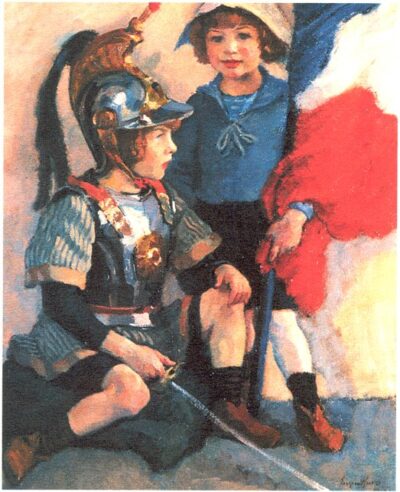 ‘For Klossowski, the work of art is not an autonomous entity but the site of a demonic complicity that begins with the artist and his particular obsession or phantasm, and is then (potentially) repeated in the experience of the viewer. It is demonic, because for Klossowski the unconscious psychic phantasms that psychoanalysis asserts are imaginary, are both exterior to the subject and completely real.
‘For Klossowski, the work of art is not an autonomous entity but the site of a demonic complicity that begins with the artist and his particular obsession or phantasm, and is then (potentially) repeated in the experience of the viewer. It is demonic, because for Klossowski the unconscious psychic phantasms that psychoanalysis asserts are imaginary, are both exterior to the subject and completely real.
‘A demon thus conceived is a virtual entity, a kind of intermediary between the human and the inaccessible divine, but it requires an image or simulacrum in order to be actualized. This conception of art led Klossowski to an idiosyncratic understanding of art’s supposed mimetic relationship to the real. For Klossowski it was an error of realism to believe that the mimetic function of art should lie in a reproduction of the real world, an error that is only compounded by the rejection of mimesis in contemporary abstract art in favour of “broken objects, [and] images gone to pieces.”
‘The idea that technical practices such as photography have freed painting from the need to represent the real world is for Klossowski a complete misunderstanding of the mimetic function of art that also underestimates the mimetic power of photography and cinema. Instead, mimesis should be understood as the reproduction of a phantasm, or the tracing of a demonic encounter that actualizes and makes communicable an otherwise virtual, but perfectly real force. Figurative, or as Deleuze says figural art, considered as a block of sensation or a phantasm caught in an image, in other words as a simulacrum, can only “reproduce the demonic strategy,” by producing the same condition in the viewer as originally experienced by the artist in submitting to the phantasm. For Klossowski this demonic complicity, as opposed to the subjectivity of the artist, explains the haunting power of works of art: “What then sustains the action of a “finished picture,” if not the coming and going of this “demonic” presence, between the artist and his simulacrum, the simulacrum and its viewer.”’ — Michael Goddard
from ‘Hypothesis of the Stolen Aesthetics.’ Read the rest here.
image: Eugen Spiro, Pierre and Balthus Playing Soldiers

‘Ganymede,’ 1978
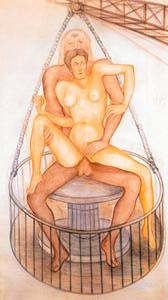
‘La récupération de la plus-value,’ 1980
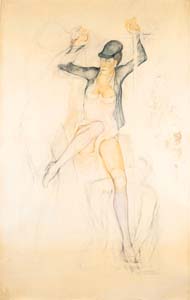
‘Les barres parallèles(II),’ 1976
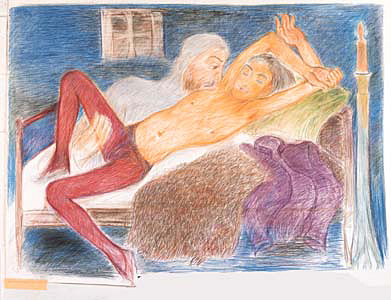
‘Le commendeur succombant a la pose provocante d’Ogier,’ 1981

‘La Nef de Fous,’ 1988-1990
 ‘In an artistic career that spanned half a century he could not really be said to have honed his technique. Rather, he worked tirelessly on the elaboration of certain obsessions, notably the insertion of the face and body of his wife, Denise – the model for the extravagantly ravished Roberte – into an apparently unending succession of erotic tableaux. The drawings are resolutely awkward. Their solecisms of scale and proportion are not so much evidence of formal naivety as invitations to address something that is, for Klossowski, far more pressing: the realm of gesture.
‘In an artistic career that spanned half a century he could not really be said to have honed his technique. Rather, he worked tirelessly on the elaboration of certain obsessions, notably the insertion of the face and body of his wife, Denise – the model for the extravagantly ravished Roberte – into an apparently unending succession of erotic tableaux. The drawings are resolutely awkward. Their solecisms of scale and proportion are not so much evidence of formal naivety as invitations to address something that is, for Klossowski, far more pressing: the realm of gesture.
‘Time and again, whatever the prodigiously imagined scenario into which the artist has thrust her, Roberte adopts the same pose. Everything in these drawings, which expose her to grips and gazes, either malign or merely curious (as in the many images where she is seized by small boys), is actually in the arrangement of her hands. Whether beset by the sinister guardsman in Roberte ce soir, pawed and pored over by adolescents or cast in further fictionalized settings (the classical rape of Lucretia by Tarquin, the strange arrival of Jonathan Swift’s diminutive Gulliver at the end of her bed), Roberte holds one hand close and closed, the other raised and open. Often her raised hand shields the eyes of her attacker while the other is thrust between her legs (the cue for questionable conjectures by Klossowski’s narrators as to whether she is protecting herself or guiding her assailant). But the pose is not always a response to violence; it is to be seen too in the drawings of Roberte (or Denise) alone. One hand curled, the other splayed, Roberte, as the title of one drawing has it, is ‘mad about her body’.’ — Brian Dillon
from ‘In the Realm of the Senses’ in Frieze Magazine. Read the rest.
image: Denise Klossowski, undated
* more Pierre Klossowski artworks
* Initiales #09 – Initiales P.K.
* buy ‘The Decadence of the Nude: The Work of Pierre Klossowski’ (Black Dog Press)
* Benjamin Ivry on Pierre Klossowski

Sometimes work by writers destined for the blog can be quickly found online, accessed with links and/or copied and pasted from their respective sites. But others have yet to make the switch from page to webpage. Klossowski is one of the latter types. Search hard and long as I did, I found very little I could use to populate this day. Not a single excerpt from any of his novels, and only a couple of nonfiction shards. So this last of the Klossowski days is necessarily more of a suggestive aside than a closing argument. Needless to say, I think his writings — esp. the novel trilogy The Laws of Hospitality (Roberte Ce Soir, The Revocation of the Edict of Nantes, and Le Souffleur,) and his books on Sade (Sade, My Neighbor) and Nietzsche (Nietzche and the Vicious Circle) are very worth your attention. But unfortunately, due to the abovementioned problem, you’ll have to take my and a few other people’s words for it.
Pierre Klossowski A Writer of Images
Pierre Klossowski Extrait VF
The Parallel Bars – Pierre Klossowski
Raul Ruiz about his adaptations of Pierre Klossowski
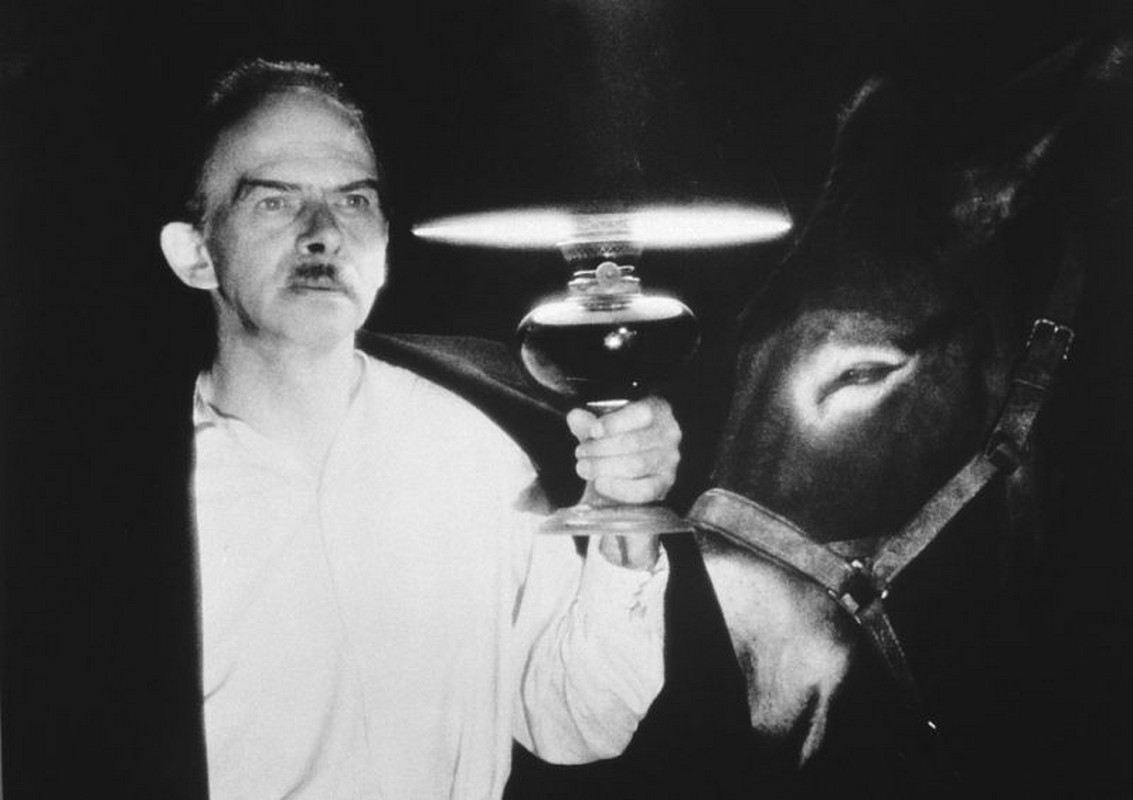
Pierre Klossowski in Robert Bresson’s ‘Au Hazard Balthazar’ (1966)
_______________
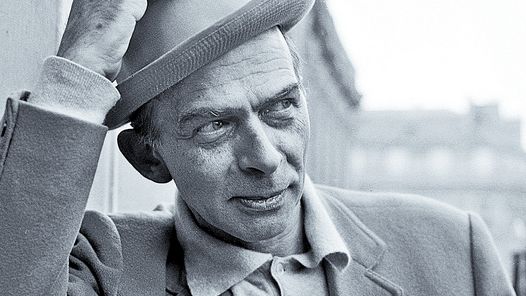
Let’s take Pierre Klossowski (1905-2001) at his word, and read him with his favorite word. He claimed to “fabricate simulacra.” What exactly did the French writer mean? The word “simulacrum” is restricted by English usage to “a representation of something (image, effigy),” to “something having the form but not the substance of a material object (imitation, sham),” and to “a superficial likeness (appearance, semblance).” Contemporary French understands the term similarly, while maintaining traces of more concrete Latin meanings: “statue (of a pagan god),” even “phantom.” Interestingly, French adds “a simulated act” to these semantic possibilities, as in Raymond Queneau’s amusing description in Zazie in the Metro: “He took his head in his hands and performed the futile simulacrum (fit le futile simulacre) of tearing it off.” For Roman writers, a simulacrum could also be “a material representation of ideas” (and not just that of a deity), as well as “a moral portrait.”
One must think in Latin when reading Klossowski. All of the above meanings inform the strange and disturbing erotic fiction of this writer who not only produced The Baphomet (1965) and the trilogy Les lois de l’hospitalité (The Laws of Hospitality) (1954-1965), but also translated Suetonius, Virgil, and Saint Augustine (alongside Kafka, Kierkegaard, Nietzsche, Wittgenstein, Hölderlin, and Heidegger). The author’s intimacy with Latin, and with Latin literature, cannot be overemphasized. So strong was his attachment that it clearly affected his French syntax and diction, as if the dead language had somehow survived in him—a second mother tongue, both nourishing and competing with a first one. Possessing an antiquarian atmosphere all its own (especially in The Baphomet), Klossowski’s style disorients readers unaware of this linguistic background (which includes, moreover, his consorting with liturgical and biblical Latin during his World War II years spent as a Dominican novitiate). May it be said that Klossowski’s meticulously quaint style is itself a simulacrum of sorts, a conscious transposition into French of the spirit of Latin, a modern-day linguistic specter of a once-vital source that has been lost and in this way “recovered”?
____________
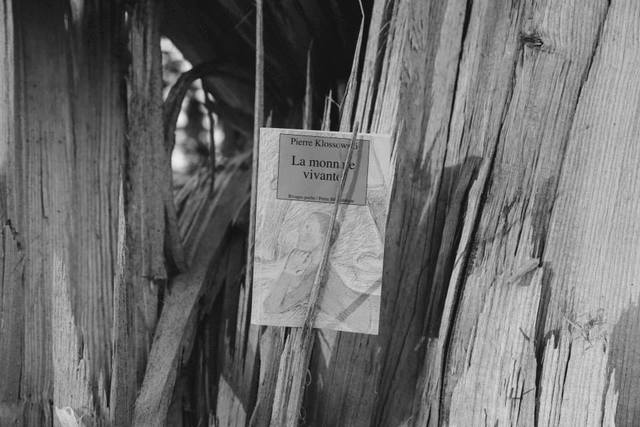
The contents of experience that Bataille declares as being so many sovereign moments–ecstasy, anguish, laughter, erotic and sacrificial effusion — these contents together illustrate that revolt which is here only a call to the silent authority of a pathos with neither goal nor meaning, experienced as an immediate apprehension of the flight of being, and whose discontinuity exerts an incessant intimidation vis-à-vis language.
No doubt, for Bataille, these movements of pathos only present themselves as sovereign moments because they verify the discontinuous itself and are produced as ruptures of thought; however, these are contents of experience that in fact differ greatly from one another with respect to discontinuity, as soon as they become so many objects of a meditation. How could laughter, as a reaction to the sudden passage from the known to the unknown–where consciousness intervenes just as suddenly, since Bataille declares: “to laugh is to think” 9 –how could laughter be comparable to ecstasy or to erotic effusion, in spite of their “reactive” affinities in the face of a same object? How could it be comparable to ecstasy in particular since the latter would result from a group of mental operations subordinated to a goal? It is a similar difficulty that Bataille himself emphasizes and takes pleasure in lingering over, as over an enterprise beyond hope from the beginning. If these sovereign moments are so many examples of the discontinuous and of the flight of being, then as soon as mediation considers them as its object, it reconstitutes all the unsuspected stages that pathos burned in its sudden appearance–and the language of a process that is only suitable for vulgar operations10 does nothing here but conceal the modalities of the absence of thought, under the pretext of describing them and reflecting them in consciousness, and thus seeks to lend to pathos, in itself discontinuous, the greatest continuity possible, just as it seeks to reintegrate the most being possible. Thus because (notional) language makes the study and the search for the sovereign moment contradictory, inaccessible by its sudden appearance, there where silence imposes itself, the simulacrum imposes itself at the same time. Indeed the aimed-for moments that are sovereign only retrospectively, since the search must henceforth coincide with an unpredictable movement of pathos–these moments appear by themselves as simulacra of the apprehension of the flight of being outside of existence, and thus as simulacra of the discontinuous. How can the contents of the experience of pathos keep their “sovereign” character of an expenditure tending towards pure loss, of a prodigality without measure, if the purpose of this meditation is to raise oneself up to this level through an ”inner” reexperience, thus producing for oneself a “profit”? Will the authenticity of these moments–the very authenticity of wastage–not be already compromised, as soon as it is “retained” as a “value”? How, finally, would they sufficiently escape from notional language in order to be recognized only as simulacra? It is precisely the same for ecstasy, which is at the same time a content of authentic experience, and a value, since it is a sovereign moment, but which only escapes from notional language by revealing itself to be a simulacrum of death. This in a meditation that amounts to fighting with all the strength of thought against the very act of thinking. “If the death of thought is pushed to the point where it is sufficiently dead thought, so that it is no longer either despairing or in anguish, then there is no longer any difference between the death of thought and ecstasy. … There is, therefore, beginning with the death of thought, a new realm open to knowledge; based on non-knowledge, a new knowledge is possible.
____________
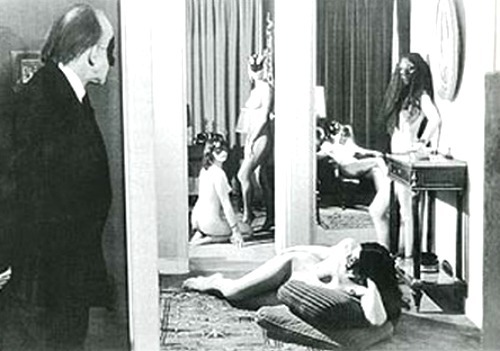
Daniel W. Smith
Pierre Klossowski’s Nietzsche and the Vicious Circle ranks alongside Martin Heidegger’s Nietzsche and Gilles Deleuze’s Nietzsche and Philosophy as one of the most important and influential, as well as idiosyncratic, readings of Nietzsche to have appeared in Europe. When it was originally published in 1969, Michel Foucault, who frequently spoke of his indebtedness to Klossowski’s work, penned an enthusiastic letter to its author. ‘It is the greatest book of philosophy I have read,’ he wrote, ‘with Nietzsche himself.’ Nietzsche and the Vicious Circle was in fact the result of a long apprenticeship. Under the influence of Georges Bataille, Klossowski first began reading Nietzsche in 1934, ‘in competition with Kierkegaard’. During the next three decades, he published a number of occasional pieces on Nietzsche: an article in a special issue of the journal Acéphale devoted to the question of ‘Nietzsche and the Fascists’ (1937); reviews of Karl Löwith’s and Karl Jasper’s books on Nietzsche (1939); an introduction to his own translation of The Gay Science (1954); and most importantly, a lecture presented to the Collège de Philosophie entitled ‘Nietzsche, polytheism, and parody’ (1957), which Deleuze later praised for having ‘renewed the interpretation of Nietzsche’.
—-It was not until the 1960s, however, that Klossowski seems to have turned his full attention to Nietzsche. Nietzsche and the Vicious Circle grew out of a paper entitled ‘Forgetting and anamnesis in the lived experience of the eternal return of the same’, which Klossowski presented at the famous Royaumont conference on Nietzsche in July 1964. Over the next few years, Klossowski published a number of additional articles that were ultimately gathered together in Nietzsche and the Vicious Circle in 1969. The primary innovation of the study lay in the importance it gave to Nietzsche’s experience of the Eternal Return at Sils-Maria in August 1881, of which Klossowski provided a new and highly original interpretation. The book was one of the primary texts in the explosion of interest in Nietzsche that occurred in France around 1970, and it exerted a profound influence on Deleuze and Guattari’s Anti-Oedipus (1972) and Lyotard’s Libidinal Economy (1975). In July 1972, a second major conference on Nietzsche took place in France at Cerisy-la-Safle, which included presentations by Deleuze, Derrida, Lyotard, Nancy, Lacoue-Labarthe and Gandillac, among many others. Klossowski’s contribution was a paper entitled ‘Circulus vitiosus’, which analysed what he called the ‘conspiracy’ (complot) of the eternal return. It was the last text he would write on Nietzsche.
____________
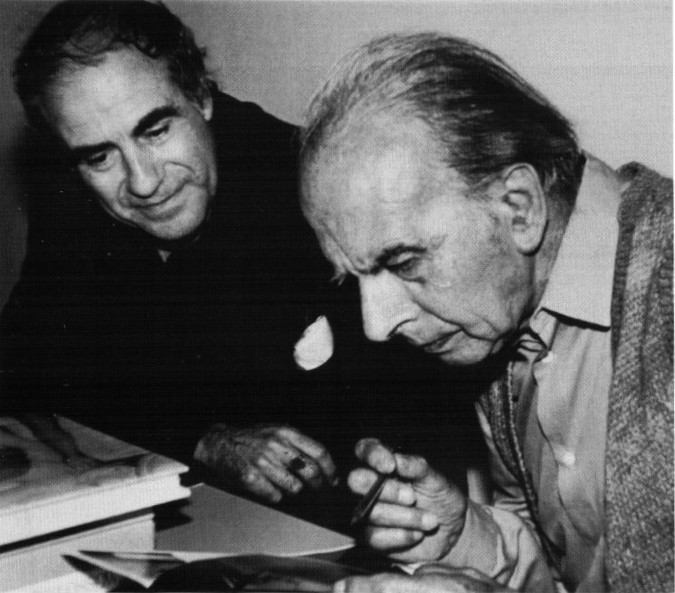
“When a god wanted to be the only God, all the other gods were gripped by mad laughter to the point of _dying_ of laughter. For what is the divine if not the fact that there be several gods and not God alone?”
Laughter is here the supreme image, the supreme manifestation of the divine reabsorbing the articulated gods [_les dieux prononces_], and articulating the gods through a new burst of laughter; for if the gods die from this laughter, it is also _from this laughter which bursts forth from the ground of all truth_ that the gods are reborn. One must follow Zarathustra to the end of his adventure to see the refutation of the need to create in relation to and against necessity, as a _denunciation_ of this _solidarity_ between the _three_ forces of _eternalisation_, _adoration_ and _creation_, these three cardinal virtues in Nietzsche, where one sees that the death of God and the distress of the fundamental eros, the distress of the need to adore are identical; a distress that the need to create holds up to ridicule as its own failure. For if it is the failure of a single instinct, the mockery which compensates for it is no less inscribed in the necessity of the eternal return: Zarathustra, once he has willed the eternal return of all things, has in advance chosen to see his own doctrine ridiculed, as if _laughter, this infallible murderer_, was not also the best inspiration, as well as the best despiser of this same doctrine; _thus the eternal return of all things wills also the return of the gods_. What other sense, if not this one, can we attribute to the extraordinary parody of the Last Supper where God’s murderer is also the one who offers the chalice to the donkey – sacrilegious figure of the Christian God from the time of the pagan reaction, but more specifically the sacred animal of the ancient mysteries, the _golden_ donkey of the Isiac [_isiaque_ – ? to do with Isis?] initiation, an animal dignified by his indefatigable _Ia_(2) – its indefatigable _yes_ given to the return of all things – worthy of representing divine forbearance, worthy also thus of incarnating an ancient divinity, Dionysus, the god of the vine, resuscitated in the general drunkenness. And, effectively, as the Traveller declares to Zarathustra: _death, with the gods, is never anything but a prejudice_.
____________
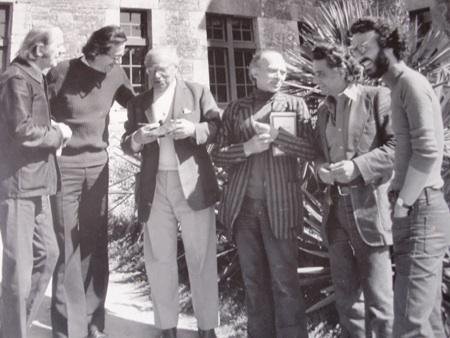
Gilles Deleuze, Jean-François Lyotard, Maurice de Gandillac, Pierre Klossowski, Jacques Derrida, and Bernard Pautrat
In 1965, Pierre Klossowski published his extraordinary set of novels, La Révocation de l’Edit de Nantes, Roberte Ce Soir, and Le Souffleur under the collective title of Les Lois de l’Hospitalité – The Laws of Hospitality. In an eighteen-page afterword, Klossowski describes the particular set of circumstances that led him to write the novels. Of this afterword, Blanchot (1971) said, “these are the most dramatic pages an abstract writing could give us today.” Blanchot in fact shies away from interpreting the text, citing its extreme difficulty. Despite this caveat, I will propose a reading of this brief afterword, to show how just a year or two before Foucault’s The Order of Things and Derrida’s Of Grammatology inaugurated a reinterpretation of Western culture along the lines of what Gianni Vattimo has called “post-structuralism’s linguistic idealism,” Klossowski, with his characteristic singlemindedness, elaborated a perverse semiotic in which the sign’s dominance is no less absolute but in no way dependent on notions of arbitrariness or difference.
This is Klossowski’s way of posing the following question: “Can a couple multiply itself otherwise than by having children, deploying, projecting, deepening, exalting, caricaturing themselves – can they each time recreate, re-wed themselves in another dimension – and all the while remain the same without ever exhausting their resources?” To approach this question, one might have expected a lengthy discourse on sexuality, reproduction, and voyeurism, but strangely enough, Klossowski’s explanation seems to amount only to a jumble of abstractions and baroque terminologies. The afterword begins as follows:
“At the end of a period in which I was led three times in a row to the same theme, resulting in three validations, the phenomenon of thought came back to me – how it is produced, with its rises, its falls and its absences-when one day, having sought to relate some circumstances from my life, I soon came to be reduced to a sign”.
Seized by what he will call the signe unique, the unique sign, in this case the name “Roberte,” Klossowski is trapped between the madness of the obsessive word and the perfect lucidity of its coherence. I present some representative excerpts from the text to give a sense of how it begins relatively coherently and very quickly goes haywire:
“Fascinated by the name Roberte as a sign, while I was in the garden seeing nothing more of the sunny greenery around me having no other vision than the unstable penumbra in which the glow of her ungloved hand played – I resolved to describe what might happen in the penumbra, which was illusory. In the name Roberte I referred all that I saw, which I would not have been able to see without this name.
“The penumbra, the glow of her epidermis, the glove, these are so many designations not of things existing here within my reach, but forming a set in conformity with the unreal penumbra …
“Will I still claim that it is not “representation” and that thought belongs to itself alone, not as my faculty, but as an intensity that found me here, in the middle of the greenery?… Will I say it is not I who designate what I understand by penumbra but thought, outside of me, which sees itself in the terms penumbra, epidermis, glove, etc.?
“But haven’t I said that the sign’s malice consisted in answering, as name, to a physiognomy exterior to the sign?
“And, indeed, it seemed that the shadow projected by the sign onto the reality of the world covered over so perfectly the physiognomy exterior to the sign that it dissimulated it under this name….”
“But, unable to limit myself to the simple coincidence of the name with this physiognomy seeking instead an equivalent to this coincidence, under the constraint the sign exercised over me, yet seeking the sort of equivalent as much to escape my madness as its constraint, though not being able to keep myself to the shadow of the sign…
“From the moment I set myself to describing this very physiognomy in the notation of the utterances flowing, outside of time, from the name Roberte, and from the moment that, in these discontinuous facts, it figured, no longer by its mere coincidence with the name, but as physiognomy, which until then was exterior to the sign that had covered it over with its shadow, the description of the shadow itself came to establish the contours of the physiognomy as its participation in external reality, and this physiognomy emerged as if from itself from the shadow spread over reality by the sign….”
“What did the silence of this physiognomy opposed to its name as sign amount to? Was the sign to be taken as a portrait? Wasn’t it the model, since it had become this sign?… Instead of the equivalent to the madness I had avoided, I found between the silence of the physiognomy and the silence of the appreciation of the outside, a portrait. But since it was still a question of juggling the unique sign, I wanted to exploit this silence of the portrait to make a painting… Then, this portrait, suddenly peopled with other figures, became a painting destined to teach through its image. But the lesson taught by the image is only the institution of a custom: the laws of hospitality.”
____________
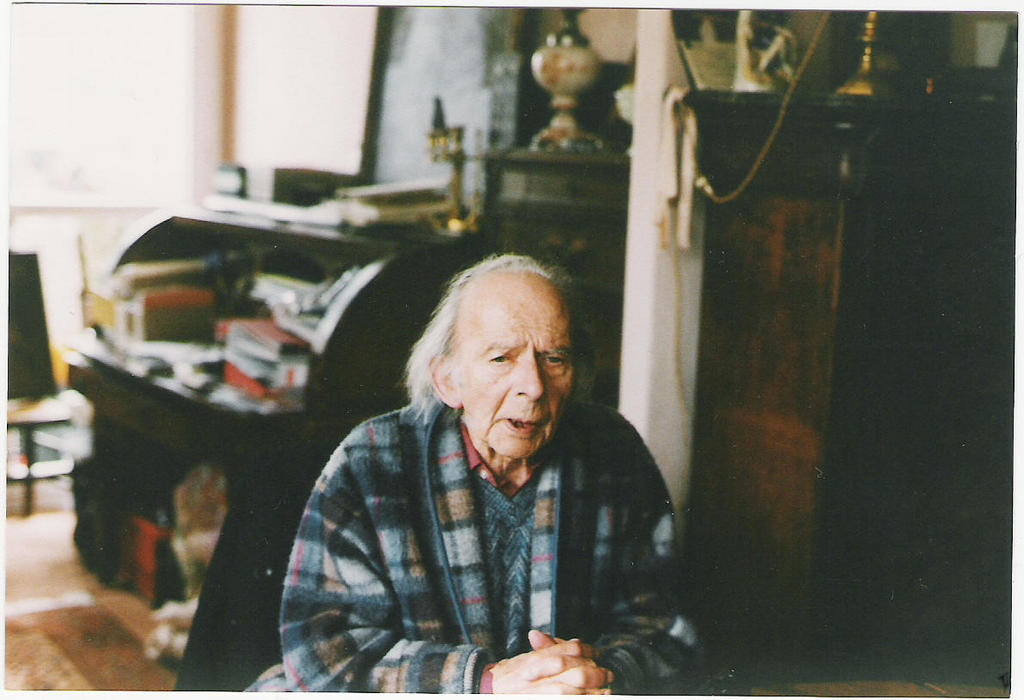
Diacritics was one of the first academic journals to bring continental theory to the US. Historically its preferred mode has been the review article that analyzes in detail the theoretical arguments and assumptions of the most significant books in the humanities and social sciences. It periodically publishes special issues on topics or on thinkers of great current interest. Forthcoming soon in that regard is:
Whispers of the Flesh: Essays in Memory of Pierre Klossowski
Special editors, Ian James and Russell Ford
Pierre Klossowski – novelist, essayist, painter, and translator – was one of the most startling, original, and influential figures in twentieth-century French intellectual culture. Confined thus far to an undeserved but somehow fitting shadow existence in the margins and notes of theorists who have become mainstays of Anglo-American criticism, Klossowski’s own work has increasingly become a focus of critical interest for its decisive contribution to the development of thought and aesthetics in France from the 1950s on. Contributions by Patrick Amstutz, Peter Canning, Russell Ford, Ian James, Eleanor Kaufman, Alphonso Lingis, Tracy McNulty, and Daniel W. Smith.
*
Japanese Pierre Klossowski Info Site
Buy Pierre Klossowski’s books
‘Pierre Klossowski’s’ Official
*
Bibliography
* (English)/(French) Sade my neighbour (Quartet Bks., 1992, ISBN 0-7043-0155-5; original French ed. Sade mon prochain, Paris, Seuil, 1947)
* (French) La Vocation suspendue (Paris: Gallimard,1950)
* (French) Un si funeste désir (Paris: Gallimard, 1963)
* (English)/(French) The Baphomet (Marsilio Pub, 1992, ISBN 0-941419-73-8 ; original French ed. Le Baphomet, Paris, Mercure de France, 1965)
* (French) Les Lois de l’hospitalité (Paris: Gallimard, 1965) (trilogy of the ‘Roberte’ novels: La Révocation de l’Édit de Nantes (1959), Roberte ce soir (1954), and Le Souffleur (1960))
* (English)/(French) Roberte Ce Soir and the Revocation of the Edict of Nantes, Dalkey Archive Press, 2002, ISBN 1-56478-309-X
* (English)/(French) Nietzsche and the Vicious Circle (University of Chicago Press, 1998, ISBN 0-226-44387-6; other ed. 2001 ISBN 0-485-12133-6; original version Paris, Mercure de France, 1969)
* (English)/(French) Diana at Her Bath/the Women of Rome Marsilio Publishers, 1998, ISBN 1-56886-055-2 (original edition Le Bain de Diane, Paris, Gallimard, 1980)
* (French) Écrits d’un monomane: Essais 1933-1939 (Paris: Gallimard, 2001)
* (French) Tableaux vivants: Essais critiques 1936-1983 (Paris: Gallimard, 2001)
* (French) L’adolescent immortel (Paris: Gallimard, 2001)
* (French) La Monnaie vivante (Paris: Gallimard, 2003)
*Balthazar (who would become famous as a painter under the name Balthus), Klossowski was mentored during his childhood by Rainer Maria Rilke (his mother’s long-time companion after her separation from her husband).
*
p.s. Hey. ** Dominik, Hi!!! The person in charge of the film just wants the credit of being in charge without doing the work to earn it basically. Yeah, I think we would have to storm into the Hallmark world like terrorists, and since it was a Hallmark world, no one would have weapons, and we could become its gods? Maybe? I was almost sure you would say you’d take the baby straight to an adoption agency, so that’s interesting. Ha ha, Dumas babies. Definitely straight to an adoption agency. Love making the thunder and lightning and rain storm we were told there was an 80% chance of us having for the last two days arrive and dissipate this awful mugginess, G. ** John Newton, Does my blog want you guys to be minimalists? I appreciate its protective instincts, but they are entirely unnecessary. I thought I was bisexual at that point because there was this young woman I was uncharacteristically very attracted to and she felt the same about me, so we gave it the old college try. Queer is the only generalising term for people like myself that I like because it’s multi-gender inclusive. I don’t dance, so I never go to dance clubs much. Lots of raves in the past, but in that context ‘dancing’ is very loose term. I saw a therapist because this longterm issue I’d had reached its peak, and I realised I needed to snuff it. I guess it involved obsessiveness, yes. No, I’ve never taken meds or felt a need to. Hyusmanns and Bouillier: nice. Oh, the JFK Jr. poems, maybe, yeah, in that case. I haven’t thought about them in a million seeming years. I would be surprised if Dorothy Allison was inspired by my real-life story. We were friends, but, yeah I don’t know, I doubt it. I never had any contact with Bear after that summer, so I have no idea what happened to him. Good question. I don’t remember his last name, so I doubt I could find out. The girlfriend from the early 80s who I mentioned wanted to me have a kid with her, but I was really not interested. I’m in the ‘my books are my kids’ camp. Sorry about your exes. I have a number of ‘died young’ ex-boyfriends. It’s a strange, real pain. ** Bill, Oh, that’s odd, on the timing. I’ve never seen her stuff 3D. Cool. You’re doing a gig! That’s fantastic! What is it, what can you say about it? ** _Black_Acrylic, Hi, B. So interesting that you saw that Edmier work. I read about the Jackie Kennedy-like dress, and I have no idea why I didn’t include that in the text. ** Darbyy🐎, Well, I’m happy that I, or, wait, my blog excited you enough to pop back in. Hi. I sent you a photo, but it might not be appropriate or inspiring, and, if it isn’t, no problem whatsoever. Medical conjecture? Sure. Interesting. I have a very good friend, no, wait, two very good friends who are constantly beset with migraines. Wait, three counting you. Their faces look so unhappy when they’ve having one. I reminder Chris Benoit. I was into WWE in his days. Ouch, yeah, not surprising about the brain damage. Jesus. My great friend George who I’ve written so much about was diagnosed as bipolar (or manic-depressive as they called it back then) when he was 12. He was re-diagnosed as psychotic, but not until he was in his twenties. If that was a thesis, you get an A! ** Probably, male, Hi. Oren Ambarchi’s great, I like his stuff a lot too. And he’s an extremely nice person. I’m so sorry about your friends. A number of people close to me have committed suicide throughout my life, and it’s a very, very difficult thing to me. No, I’ve never attempted suicide. I’ve always been weirdly optimistic and okay with myself (for the most part). Hugs to you from me and here. ** Damien Ark, Hi, D. Oh, sure, my total and pleasure and honor. I’ve never done an ABDL-centric post. I’ve had ABDL slaves in the slave posts, although strangely few considering the large number of them on those sites. Thanks for the song! I’ll get to listen to it when I’m done here. ** Minet, Hi, pal. Yeah, it’s a ton of work, but at least it’s enjoyable and fascinating. We’ll do whatever we have to to get either that genius guy or someone really good to do the final sound mix/design because the film has very intricate sound design, and it won’t work properly without it. Yeah, kind of the same with me. I was the first of my friends/peers to have my writing start to be widely recognised, and that helped organise a scene in some way. I was in an amazing scene of other young writers when I was starting out, and that made absolutely all the difference possible for all of us. Very worth the work and hassle. Yes, it’s great they’re reissuing ‘Argento Series’. I was supposed to blurb it, but I think I missed the deadline, yikes. Yes, I did a Jean Rollin Day on my blog. Hold on and let find it. Here. Hugs hugs hugs right back to you. ** l@rst, Hey, buddy! First, thanks for the nudge about the questions. I needed it. I’ll get them answered and back to you straight away. Yeah, treat your liver like a bro. You’ll need it for a long time. Excellent about the tons of poems! I’ll look for the convoluted oral history of Sunburned Hand of The Man. You know me: convoluted is a magic word. Much love back from muggy, muggy Paris. ** Kettering, Well, thank you very kindly, sir. Much needed, in point of fact. Nice quote. You know I love that dude who sang it. Take care. What’s up? ** Right. Today I’ve decided to restore the blog’s old, semi-XL large sized Klossowski Day for you folks. I hope I did the right thing. See you tomorrow.




 Now available in North America
Now available in North America 
Hi!!
Hell yes! Pierre Klossowski Day! Thank you!
Yeah, that sounds like a hugely problematic attitude… Fucking hell.
Poor Hallmark people – imagine if we really became their rulers! Haha.
I’m not gonna say my first thought wasn’t an adoption agency, haha. But then I was gripped by an imaginary parental instinct I’ve yet to encounter in my actual life and thought it might be fun to nurture another little weirdo. As long as they don’t look like a Dumas baby, of course.
I’m going to send a very boring and convenient love, but… love sending the rain part of your storm right over here once it’s done in France because we’re dying, too, Od.
No, they were not my friends. One was “alpha-bully-type”, another – very materialistic, boring guy. But weird feelings, anyway . Sorry about your friends. Pierre Klossowski seems like very interesting guy, but not like novelist, for me. I read «Baphomet», and found that book unskillful. Or that just not his best? I know you like his cuckold novel
“Robert ce soir”, but can’t find pdf. Have a lovely day/night
Dennis some of image links are broken, is it on my end? You know I had visions of his paintings and of the Baphomet when I went to Lyon and could not sleep at night? I should investigate more on the Fishbones tunnels. I should go again, if you go there I think you will like the Musée des Beaux-Arts de Lyon, l recommend. Which one of Klossowski books should I read first you would recommend to me Sade my neighbor
Love from Crete for inspiring times
I just got from my mobile phone to check and all image links show up fine! I was on the laptop before
A writer of syrtling originakity, “Le Baphomet: is ny favoite. Raul Rui has nade nany film adaptaiond of Klossowski.
I’m yet to read any Klossowski, but I’m a fan of his drawings and his brother’s work too. Thank you for this day!
I sent Lun*na the quote, “Balthus summed up his own painting by saying, “I do surrealism in the style of Courbet,” She is into Courbet; in fact, it is more of an obsession with her. Klossowski, I think, was the first writer to give importance to Sade in the 20th century. Am I wrong about that? If it wasn’t for him, Sade may have become a forgotten figure – but I don’t know for sure…
Dennis, That is the rub, no? Gotta be talented too. Why can’t we just be one thing and be great?! Or really, we probably can but just not in most things.
I looked for my Story of the Eye and yeah, it’s gone. I must’ve loaned it to someone. I’m a buy another copy when I can.
I’m pretty sure it’s the same Brian. Cool dude.
Poor X/Twitter: no Dennis. :'(
Well, then, you’ve got Insta. Pretty damn good reach on there. I’m sure it skews a little younger too, as opposed to FB. Twitter, I’m thinking, is a mix. I see all types on there.
I had that hernia appointment Tueday. The doc said I do have a very small hernia and advised against surgery. Which is quite telling bc most surgeons try to throw you up on the table right away.
Oh, and he’s from Azerbaijan. But get this: half his family is from Ukraine (Ashkenazi Jews), the other from Russia, as far as his ethnicity/ancestry goes. He came to the US in 1989 with his family.
I think David does have a conscience. About most things anyway. He’s going to a little party with me tomorrow. If he’s here. Kayla and her housemate are having it. A bunch of my other friends are going. Fingers crossed it turns out all right.
Hope your weekend is great. 😀
Hi! Im back sorry for the delay I was oddly tired after a pretty noting week so it jacked my schedule up! Hum what was I talking about oh right! Upheaval! For a couple weeks I totally thought my life was over due to numerous past decisions(dropping out of college, boys I’ve focused on ect.) but it ended up just being a transitional period and I came out on top well feeling like It at least! Still in spoiled kid start up mode sort but gearing everyday to just take over the world or just the parts no one is paying attention to. Walked around a bunch and got physically hotter too which is always a plus. Took over my huge apartment and boy stuff has been chill for once can’t say much on that front but I may actually be playing in the big leagues with boys who are my type and also equals which is a rather dangerous game for the type of person I am to have to be equal to(mildly psychotic, Cold as fire hot as ice, so smart they play dumb those kinds things) part I was missing before. Oh do you have any fire island experience/stories? is that a good summary ask a question or 2 and tell me whats up with you be back pronto promise this time!
The pain in my ear got much worse overnight, hitting a new level of discomfort. I was able to move up my doctor’s appointment, but next Wednesday is still the earliest I can see him. Ouch.
I reviewed BAD THINGS, a rather tepid attempt at a queer, female remix of THE SHINING: https://artsfuse.org/278619/film-review-bad-things-the-legacy-of-the-shining/
Klossowski is a god, I actually used a passage from Le Baphomet as the epigraph for my book! Love, love, love him. My French friend who I talked about brought a copy of La monnaie vivante with him as a gift for me, great little book. He also gave me a photo of himself posing next to JD Cadinot’s grave, which was so special <3 Pierre's book on Sade is for sure my favorite study of his ever, even more than Barthes and Bataille and Beauvoir and Carter etc. I feel like he really got him. Just an incredible writer and thinker. A bit underrated, if anything.
Hey hello. um so the whole 2 week thing was a failure. It was for “staying clean” trying to do like a trainspotting thing where I put ALL my energy into staying clean but I failed. I think I got scared cuz I was afraid that if I stopped too long I would get the equivalent of “Refeeding syndrom” except for my habit where if I stop too long i’ll just end up relapsing drastically to make up for the damage I didn’t do and then die. But its fine ive accepted I just have to manage how I do it without killing me. Although, it doesnt help that I have a couple cuts on my neck that I dont remember doing, so now I gotta stay inside till they heal so friends dont get worried.
Boring stuff aside. Yes I saw the email! Innapropiate? Ofc not! God, I draw so much messed up stuff. I honor people by drawing mutilated depictions of them!
Oh yeesh. Yes psychosis and mania is a big cringe. People dont ever talk about how vulnerable being insanely manic makes you! In my experience, people always think its like this super nervous bubbly person who wont shut up and sit down, acts “cutely psychotic” Like it makes me want to cringe. Its not a hyperactive child!! I was in a really bad manic phase last Christmas and was hospitalized. When I got there I had this BIG idea that I would befriend EVERYONE and everyone wanted to befriend me and I would write a book about them all. The reality was some people can be horrible no matter how nice u are and I was taken adavantage. I grabbed a pen from a staff member during lunch and hurt myself because I thought I failed long story short.
Personally, I dont find that to be a proud moment but I wish people would see the realities of things!! LIKE BROO!! Sorry if I went on too long. Im writing an entire book about how this topic disguists me when ppl get looked upon as aegsrdht sorry I could go on.
Takeaway question! Im going to fund a surgery and ask all the tall people I know if they would like to donate…hm.. about 2 inches? in height to donate to my very short figure. Would you like to contribute. It will benefit us both! say, I will be taller and you wont hit ur head when you walk through doors!!
Also how did u already know my email? o.o
ok I missed out on a very good joke! Pretend I said this so I can fulfil my comedic intuition.
(starting from the takeaway question)
It will benefit us both! I will be tall enough to be able to ride a rollercoaster and you wont hit ur head on the way out doors! (thank you very much)
Also I just made plans to see a friend saturday, despite what I said. Finger’s cross the “neck thing” wont freak them out and they wont get worried
Hi Dennis, what are your favorite horror films or novels? I watched the devil’s rain and as far as 1970s horror films go it was not bad. I guess Travolta got freaked out during the filming and Joan Prather got him to join her cult of xenu. I tried reading dianetics in the 1980s or early 1990s in school as it was marketed like crazy as a self help book and it was super boring. The devil’s rain looks like it would have been a fun film to be in.
Thanks for telling me about Pierre Klossowski. I like some of the artwork such as the Templar knight kowtowing to Baphomet. I wonder if my very old Baltic German ancestors once did this?
I understand what you mean by ‘queer’. I shy away from it as when I worked in academia there were heterosexual men who freely used the term just to appear edgy, shocking, or progressive all while ignoring and making fun of bisexual and gay students. There are other reasons I don’t use it and don’t like it and see it as a slur, but I don’t feel like writing about this on the internet on a blog for all to read. To me it was not traumatic, but why are trauma and oppression very popular themes in literature, film, etc. now?
Right now I am obsessed with fermentation and am making kefir and kvass.
I am super tired, and will reply to the rest tomorrow. Have a good weekend.